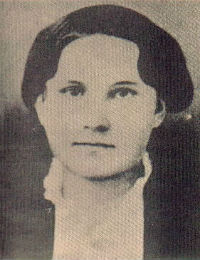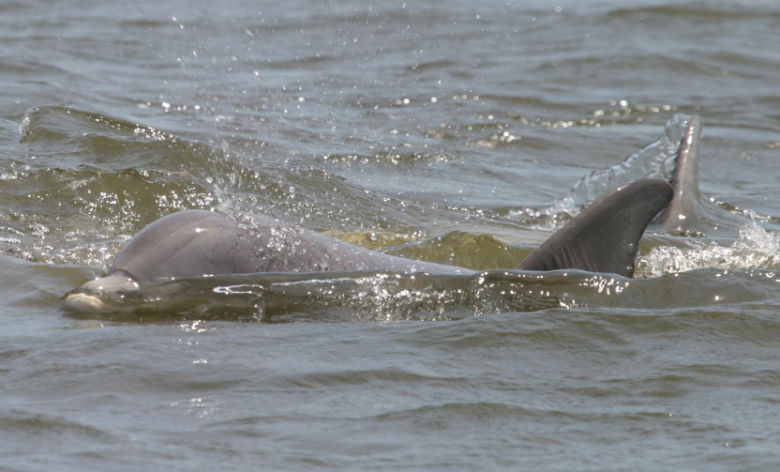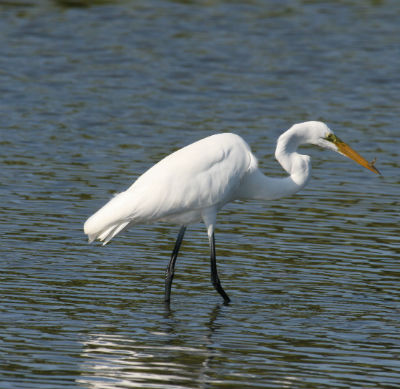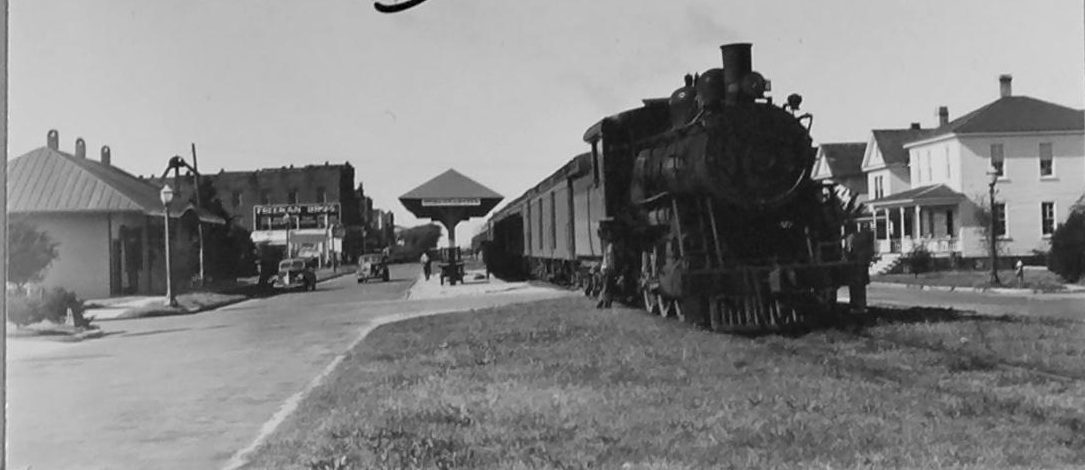MOREHEAD CITY — I live on Calico Creek in Morehead City. If you live in town or anywhere close to it, your response to that statement is probably something along the lines of “Yuck.” This small tributary to the Newport River has a long and sometimes troubled past as a place where Morehead dumps its sewage.
But, believe it or not, it’s well worth a look from the cockpit of a kayak.
Supporter Spotlight
 Taking a lunch break on a small beach at the mouth of Calico Creek by the Newport River. |
Before I put in, I wanted to get a little more background on the creek. At the History Place, a local museum, I pored over old maps and newspaper articles and availed myself of the encyclopedic knowledge of John Stephens, a local historian and weekly volunteer who grew up in the area. He shared both the history and his memories of growing up on the creek.
The first deed in the area is dated 1722, when land around the creek was used for timber and rich farm land. During those early times, the creek was deep enough that its banks were a center of water-based commerce, home to a sawmill, a shark processing plant and a brick yard. The brick yard was built to supply the bricks for Fort Macon, which was built over 10 years starting in 1826. The fort in nearby Atlantic Beach is now the centerpiece of a state park.
The creek was also known for producing the large quantities of crabs. Crab Point, the name given the north side of the creek and the Newport River, reminds us of this history. Oysters, shrimp and fish were also plentiful and supplemented many a farm family.
Calico Creek, though, has been closed to shellfishing since the 1950s, which is when the Shellfish Sanitation Program of the state Division of Marine Fisheries began keeping records, reports Shannon Jenkins, an environmental senior specialist with the program. Morehead City now boasts a modern sewage treatment plant with an impeccable record, but in the bad old days, raw sewage was discharged into the headwaters of the creek. The waters remain closed to shellfishing because it’s believed that the sediments that have made the headwaters so shallow remain contaminated.
 Emeline Pigott, a Confederate spy, was one of the more famous residents of Calico Creek. |
One of the most famous residents of Calico Creek was Emeline Pigott, a young woman who became a Confederate spy during the Civil War. She was known for daring exploits as she smuggled messages across enemy lines in her voluminous skirts and hosted clandestine travelers at the family farm. At one point she was jailed and sentenced to death. She was then mysteriously released; supposedly because of the secret information she had on Union officials.
Supporter Spotlight
The Pigott homestead took up all of what is now my neighborhood; the family cemetery sits on the creek, tended by the city. Stephens remembers going on Easter egg hunts in the Pigott yard in the mid-1930s. He also has fond memories of going up the creek with his friends on a skiff, getting back after dark, to the consternation of his parents.
There’s a public access point and floating dock at 608 Bay Street, at the intersection of Bay and Sixth streets. Parking is on the street. Timing is key to launching here; if the tide is low, it adds a long, boat-hauling walk over oyster shells to the trip. We put in just before high tide and floated right from the dock.
As we curved around a marshy island just north of the yacht basin, a pair of dolphins surfaced about 30 feet from our boats. They escorted us across the mouth of Calico Creek and into the Newport River, their skin gleaming in the sun, the exhalations from their blow holes sounding a husky counterpoint to the gulls’ cries.
 A pair of dolphins surfaced near our boats both coming and going. Photo: Sam Bland |
We paddled across the river to a small island beach. The short sandy spit is a common stopping point for boaters and paddlers. After a quick lunch beachside, we set out to explore the marsh. This area is known as Haystacks, and it is a haven for kayaking because much of it is generally too shallow for power boats. We meandered along the narrow passage ways, startling herons and egrets as we passed. Fish ruffled the water’s surface and jumping mullet jumped, taunting us. There are passages through the marsh, but we picked the wrong paths, so we retraced our way out.
 A great egret snatches its prey. Photo: Sam Bland |
With the sun starting to set, we paddled back across the river toward the mouth of the creek. Once again we were joined by a pair of dolphins, who stayed with us until we passed the yacht basin.
We pulled our boats out of the water, having to drag them from further out since the tide had fallen. A couple on the dock had caught puffer fish, which actually does taste like chicken, and mullet. My companion had trolled a line behind the boat during the trip to no avail. As we loaded up, I was grateful that this beautiful trip was available to me just by crossing the street to my neighbors’ yard. The public access is a much easier way to start, however— the bridge on 20th street is impassable at high tide.
If you’re looking for a local trip, give Calico Creek and the Newport River a try. You’ll be glad you did.







